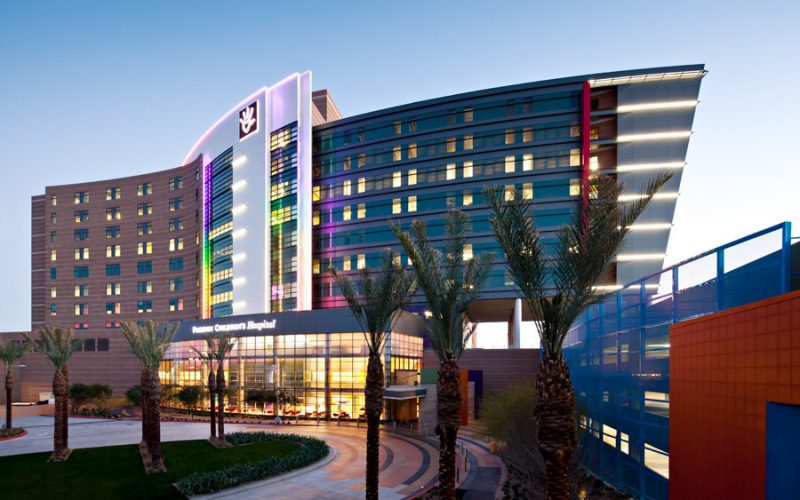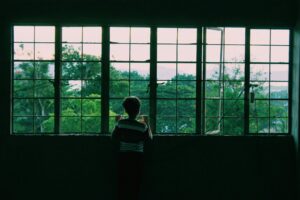By Gregg Woodnick and Isabel Ranney
Despite being the fifth-largest city in the United States, Phoenix only has seven board-certified pediatric orthopedic surgeons, five of whom work at Phoenix Children’s Hospital. Because of their specialty, it is safe to presume that the surgeons all know each other from their professional community and any conferences they may attend.
Imagine one of the surgeons treats an 18-month-old child who presented at Phoenix Children’s Hospital Emergency Room with a fracture. After reviewing the x-rays, the treating pediatric orthopedic surgeon announces the injury could not have occurred but for child abuse. The doctor notates the child suffered from “suspected non-accidental trauma” (SNAT) and promptly informs the Department of Child Services (DCS).
Their child’s injuries heal, but the parents are left dealing with the impact of the doctor’s proclamation that their child must have been the victim of abuse. After receiving the report from the doctor, DCS sends investigators, who separate the parents and ask them to explain how their child was injured. The parents state they believe the injury occurred a few days earlier when they took their child to the trampoline park. Both parents vehemently deny they have ever intentionally injured their child.
After interviewing both parents, DCS files a dependency petition stating that one of the parents abused the child and the other parent is covering up for them. As a result, DCS removes the child from the custody of the parents. To prepare for their hearing, the child’s parents will need to find a medical expert willing to explain how the doctor erred and the injuries were accidental. Which of the other surgeons is likely to testify as an expert disagreeing with the diagnosing physician? Likely, none of them.
Much like how members of law enforcement abide by a Blue Wall of Silence (also referred to as the Thin Blue Line) when they feel pressured not to report the misconduct of another officer, a similar unspoken agreement exists between medical professionals. This Medical “Code of Silence” makes it particularly difficult for a person accused of child abuse to find any doctor willing to testify contrary to someone within their professional community. After all, the doctor who made the abuse proclamation may have mentored or taught every other qualified expert in the area.
Of course, medical professionals are mandatory reporters, and they can–and should–report suspected child abuse. Arizona’s mandatory reporting statute, A.R.S. § 13-3620, requires physicians, nurses, physician assistants, teachers, and others to report suspected child abuse. Mandatory reporters may even face professional and criminal consequences for failure to report. Additionally, under A.R.S. § 13-3620(J), mandatory reporters are immune from civil or criminal liability if their report turns out to be incorrect. Thus, when the doctor declares the injury was caused by child abuse, the parents accused of abuse at the hospital often bear the burden of locating expert witnesses to say the doctor erred in not considering alternative explanations.
Although it would be ideal and less costly for the parents to hire a local expert, the “Medical Code of Silence” often means that parents must look outside of the city and often, the state, to find experts willing to testify that a doctor was mistaken in finding child abuse. This search can be very difficult because a doctor who would be willing to testify in a medical malpractice case may be unwilling to become involved in an abuse case because of the social stigma that may stem from helping to defend an accused child abuser. In addition to being difficult, finding an expert can be costly, especially when it involves finding an expert to testify against a doctor’s opinion that a child was abused. Often, the parents will have to choose an expert out of a small group of doctors located around the United States.
When the treating physician is testifying as a lay witness, they may inadvertently transition into offering expert witness opinion despite not being vetted by the court to ensure their credibility. More importantly, the jury in a criminal case may not understand or appreciate the difference between a doctor qualified as an expert and a doctor testifying about his treatment decisions. When the doctor’s opinion reaches into expert territory, the doctor becomes less likely to admit fault because they strongly believe their diagnosis to be correct, especially if it is being supported by DCS and the State. This is true even after presentation of contrary evidence. When this occurs, it is commonly referred to as “confirmation bias.” This bias also reinforces the Code of Silence, which causes other doctors to be less inclined to get involved.
Courts and juries tend to find local medical experts more credible because they believe the treating physician has more intimate knowledge of the facts than an expert who is flown into the state to testify. Further, factfinders tend to defer to the opinions of treating physicians because they did not “sign up” to come to court. They are viewed as heroes because of the status and morality of their profession (also known as the “halo effect”). Thus, in addition to the Medical Code of Silence, parents accused of child abuse should be aware of the hurdles their expert will have to overcome when testifying.
The challenge of protecting the fundamental right to parent often comes down to finding the right experts and using their opinion to educate the prosecutors, case workers, and court that there is an alternative, rational scientific explanation for the injury.
Gregg Woodnick has been practicing law in Arizona for over 20 years. He is a former adjunct law professor and has lectured for Yale University, Midwestern College of Osteopathic Medicine, Arizona State University and Northern Arizona University.
Isabel Ranney is currently working at Woodnick Law as a law clerk and is in her second year of law school at Sandra Day O’Connor College of Law at Arizona State University.



